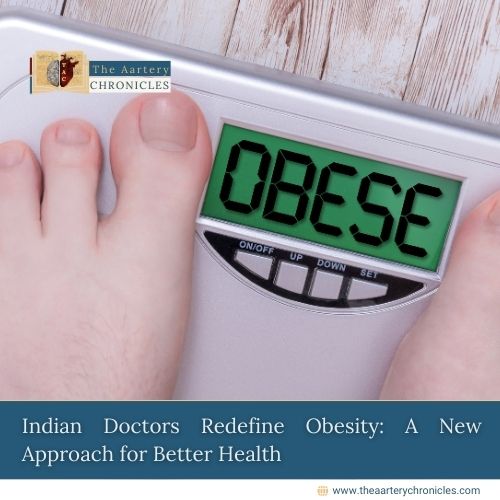

Indian Doctors Redefine Obesity: A New Approach for Better Health
A groundbreaking study by Indian doctors, including experts from the All India Institute of Medical Sciences (AIIMS), New Delhi, has redefined obesity specifically for the Indian population. This research moves beyond the traditional Body Mass Index (BMI) to focus on abdominal obesity and related health conditions.
This new classification, introduced 15 years after the previous guidelines, aims to address the unique challenges posed by obesity in Asian Indians
Why the New Obesity Guidelines Were Needed
Limitations of BMI
The older BMI-based approach, which calculates obesity using weight and height ratios, failed to capture the complexities of obesity in Asian Indians. Emerging data revealed that abdominal fat is a common issue in this population. This is closely linked to insulin resistance and an early onset of diseases such as
- Diabetes
- Cardiovascular conditions
Focus on Comorbidities
The updated guidelines also consider comorbidities such as
- Diabetes
- Heart disease
- Mechanical issues like knee and hip osteoarthritis
These health problems significantly impact quality of life and are now integral to diagnosing and managing obesity.
A Two-Stage Obesity Classification System
The revised guidelines introduce a two-stage system that incorporates both general and abdominal obesity:
Stage 1: Early Signs of Obesity
- Criteria: BMI above 23 kg/m² without significant organ dysfunction or impact on daily life.
- Concerns: While no immediate health problems may arise, this stage can progress to more severe conditions if left unaddressed.
Stage 2: Advanced Obesity
- Criteria: BMI above 23 kg/m² combined with abdominal fat, measured by waist circumference (WC) or waist-to-height ratio (W-HtR).
- Health Impacts: Includes comorbidities like type 2 diabetes, cardiovascular diseases, and joint issues such as knee arthritis
Expert Insights on the New Guidelines
Dr. Naval Vikram, Professor of Medicine at AIIMS, emphasized the importance of a tailored definition for Indian obesity, stating, “This study fills critical gaps in understanding obesity and provides a rational approach to managing it effectively.”
Dr. Anoop Misra, Executive Chairman of Fortis C-DOC Hospital, added, “Obesity rates in India are rising at an alarming pace, even in rural areas. These guidelines are practical and enable early, targeted interventions.”
The Path Forward: Stage-Specific Management
The study recommends tailored weight-loss strategies based on the two-stage classification. Early intervention can prevent Stage 1 obesity from advancing to Stage 2, reducing the risk of related health conditions.
Why This Is Important for India
Obesity in India is growing rapidly, affecting both urban and rural populations. This updated approach considers the specific needs of Asian Indians, ensuring more accurate diagnoses and effective management strategies.
By focusing on abdominal fat and related health risks, these guidelines pave the way for improved health outcomes across the country.
Key Takeaways
- New Approach: Moves beyond BMI to include abdominal fat and comorbidities.
- Two-Stage Classification: Focuses on early detection and stage-specific management.
- Expert Endorsement: Backed by leading medical professionals for practicality and effectiveness.
This redefinition of obesity is not just a medical update—it’s a vital step toward addressing India’s rising obesity crisis and improving the nation’s overall health
Source: Inputs from various media Sources

Dane
I am an MBBS graduate and a dedicated medical writer with a strong passion for deep research and psychology. I enjoy breaking down complex medical topics into engaging, easy-to-understand content, aiming to educate and inspire readers by exploring the fascinating connection between health, science, and the human mind.








